Uso di librerie fagiche per isolare in vitro anticorpi monoclonali
Uso di librerie fagiche per isolare in vitro anticorpi monoclonali
Uso di librerie fagiche per isolare in vitro anticorpi monoclonali
Create successful ePaper yourself
Turn your PDF publications into a flip-book with our unique Google optimized e-Paper software.
USO DI LIBRERIE FAGICHE PER ISOLARE ANTICORPI MONOCLONALI<br />
Tabella 1. - Efficienza della libreria fagica anticorpale ETH-2<br />
Antigene Pann<strong>in</strong>g ciclo Concentrazione Titolo Reattività <strong>in</strong> Elisa Cloni positivi (%)<br />
<strong>di</strong> antigene (tu/ml) del policlonale<br />
BSA 1 40 µg/ml 2,0 x 105 -<br />
2 50 µg/ml 1,5 x 107 -<br />
3 50 µg/ml 3,1 x 107 + nt<br />
GO 1 50 µg/ml 1,0 x 107 -<br />
2 50 µg/ml 2,4 x 107 -<br />
3 50 µg/ml 4,0 x 103 + 16,6<br />
KIA 1 37 µg/ml 1,8 x 107 -<br />
2 37 µg/ml 1,4 x 107 -<br />
3 37 µg/ml 1,0 x 103 -<br />
4 30,7 µg/ml 1,06 x 103 + 44 (12)<br />
HSA 1 50 nM 1,6 x 105 -<br />
2 50 nM 2,2 x 107 -<br />
3 50 nM 8,9 x 10 10 + nt<br />
CEA 1 50 nM 6,5 x 104 -<br />
2 16,6 nM 1,3 x 107 -<br />
3 50 nM 9,2 x 10 10 + 83 (0)<br />
Peptide B-50 1 100 nM 5,5 x 103 -<br />
2 100 nM 1,2 x 108 + 19 (3,2)<br />
Peptide E 1 100 nM 3,2 x 105 -<br />
2 100 nM 3,4 x 108 -<br />
3 100 nM 5,0 x 105 + 66 (0)<br />
GDA 1 50 nM 1,6 x 105 -<br />
2 50 nM 1,7 x 108 -<br />
3 50 nM 8,9 x 10 10 + 82 (3,2)<br />
BSA: bov<strong>in</strong>e serum album<strong>in</strong>; HSA: human serum album<strong>in</strong>; GO: glucose oxidase; Kia-GST: glutathione-S-transferase; CEA: carc<strong>in</strong>oembrionic<br />
antigen; GDA: glicodel<strong>in</strong>a A; peptide B-50; peptide E. In parentesi è riportata la <strong>per</strong>centuale <strong>di</strong> cloni reattivi sulla<br />
streptavi<strong>di</strong>na o sul carrier GST; nt: non testati come <strong>monoclonali</strong>.<br />
A questo scopo abbiamo analizzato gli <strong>anticorpi</strong><br />
<strong>monoclonali</strong> me<strong>di</strong>ante tecniche <strong>di</strong> rout<strong>in</strong>e come<br />
western blott<strong>in</strong>g, immunoistochimica e citofluorimetria<br />
a flusso. I dati <strong>di</strong> questi es<strong>per</strong>imenti <strong>in</strong><strong>di</strong>cavano che<br />
gli scFv così come erano stati isolati e senza ulteriori<br />
manipolazioni geniche tese ad aumentarne l’aff<strong>in</strong>ità<br />
erano utilizzabili <strong>per</strong> identificare la presenza<br />
dell’antigene specifico. Per esempio scFv specifici <strong>per</strong><br />
il CEA erano <strong>in</strong> grado <strong>di</strong> riconoscere <strong>in</strong> western<br />
blott<strong>in</strong>g sia l’ antigene purificato sia quello espresso <strong>in</strong><br />
cellule <strong>di</strong> carc<strong>in</strong>oma <strong>in</strong>test<strong>in</strong>ale LoVo. L’eccellente<br />
qualità degli scFv anti CEA veniva ulteriormente<br />
407<br />
confermata da stu<strong>di</strong> immunoistochimici e <strong>di</strong> citofluorimetria<br />
a flusso che <strong>di</strong>mostravano come il clone D3 si<br />
legasse <strong>in</strong> cellule <strong>di</strong> carc<strong>in</strong>oma <strong>in</strong> modo estremamente<br />
specificio sia come scFv espresso su fago che come<br />
prote<strong>in</strong>a solubile (Fig. 3), e con patterns del tutto<br />
simili a quelli osservati con <strong>anticorpi</strong> <strong>monoclonali</strong> <strong>di</strong><br />
derivazione cellulare somatica. Anche gli <strong>anticorpi</strong><br />
ricomb<strong>in</strong>anti <strong>di</strong>retti verso la GO mostravano una<br />
ottima reattività <strong>in</strong> western blott<strong>in</strong>g mettendo <strong>in</strong><br />
evidenza legami con molecole <strong>di</strong> peso molecolare pari<br />
a 75 kDa, corrispondente al monomero della GO (dati<br />
non mostrati).


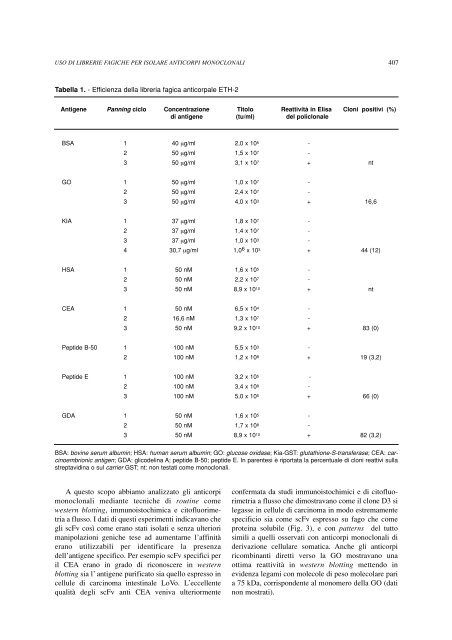
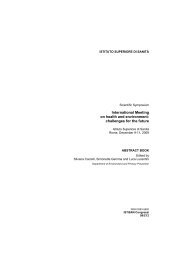
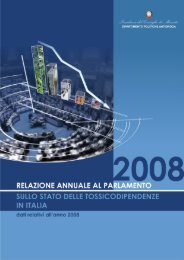
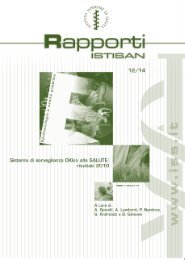
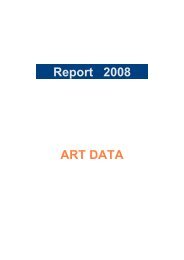
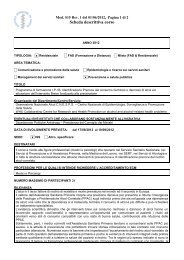

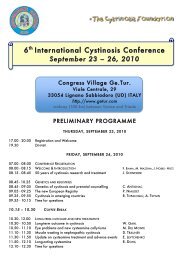
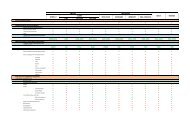
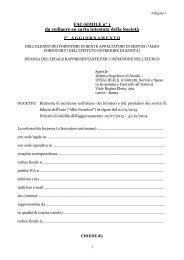
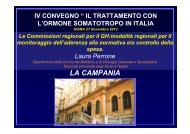
![Emilia Romagna [PDF - 175.10 kbytes]](https://img.yumpu.com/23556597/1/184x260/emilia-romagna-pdf-17510-kbytes.jpg?quality=85)
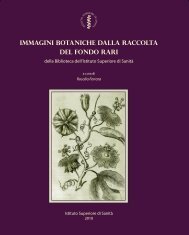
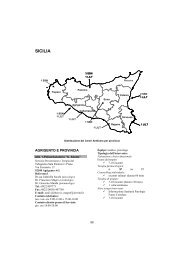
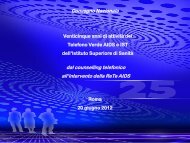
![Istisan Congressi N. 66 (Pag. 1 - 81). [PDF - 2021.12 kbytes] - Istituto ...](https://img.yumpu.com/23556493/1/171x260/istisan-congressi-n-66-pag-1-81-pdf-202112-kbytes-istituto-.jpg?quality=85)